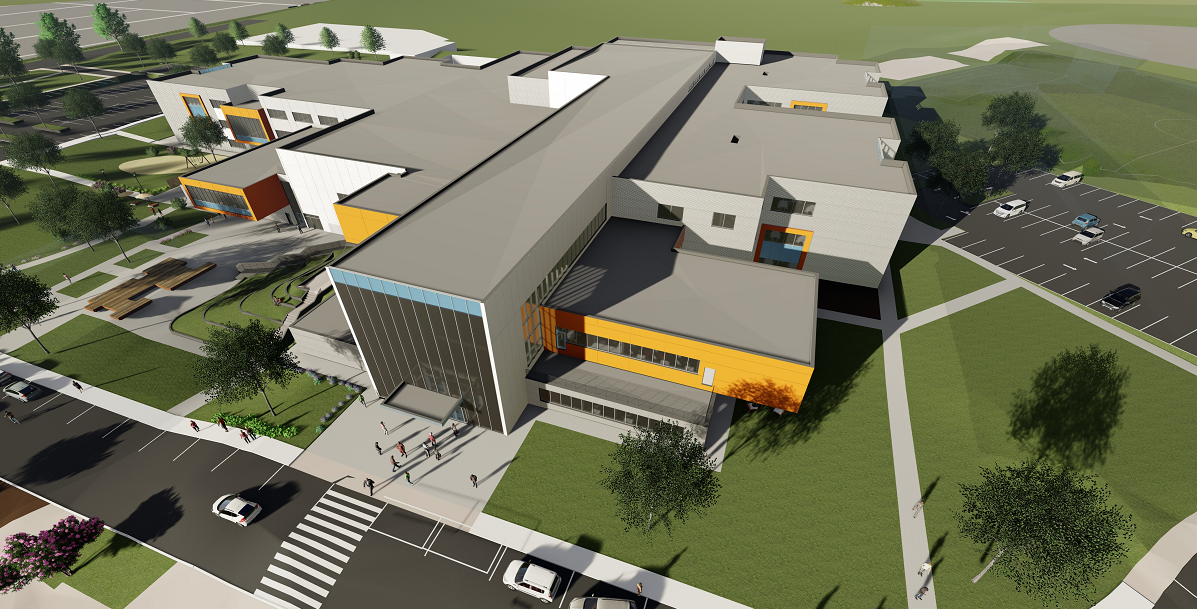
Owen Hu, Grade 11

You walk through the age-old halls of Burnaby North. Hints of history are all around you: the portraits of graduating classes of decades past, the display of school trophies won by former Vikings, and the visibly ancient composition of the buildings. Yet, look out the window and you see workers in yellow and orange vests, steel beams being hauled up many stories, and heavy construction heralding the rise of the new school. In this awkward—yet unique—intersection of the past and future, Burnaby North will soon celebrate its 100th anniversary. Coming with this momentous occasion is a rich history, from humble beginnings to a century-long community.
As Burnaby’s first high school, Burnaby North opened on September 21, 1921, in the basement of a local Presbyterian church for 27 students and two teachers. The school migrated to 4375 Pandora Street from 1923–1945 in what is today Rosser Elementary before moving to 250 Willingdon Avenue in 1945. By this point, Burnaby North was a senior school, and all students took French or Latin. The Burnaby North at 751 Hammarskjold Avenue, the address today, opened in 1961 as the Burnaby Heights Junior Secondary.
In the 1970s, there was a general decline in secondary enrolment all throughout Burnaby. By 1981, the situation grew so troublesome that it became necessary to consolidate the senior school with the junior school, thus forming the Burnaby North Junior-Senior High School (the present-day “north building” was the former senior school, while the “south building” was the former junior school). With newly-constructed walkways connecting the two buildings, the first traces of the modern Burnaby North were born.
Around a decade ago, Burnaby North peaked at an enrolment of over 2,400 students, thereby making it the largest secondary school in Western Canada. Although bearing a sometimes dull history marked with relocations and merges, the school had its fair share of interesting historical quirks. With the introduction of the Advanced Placement (AP) program in the 1950s, any student that scored a 3 or higher could be admitted to Harvard. There was also an accelerated honours program starting in 1983 that allowed students to complete two grades in one year. By 2010, Burnaby North had also been named Canada’s greenest school.
Bringing us back to the present in 2022, the construction of the new school is fully underway, signaling the beginning of the next chapter of Burnaby North’s history. Asking members of the student government what there is to look forward to, many members answered with how the “school’s culture will be affected by such a significant milestone”. With record “anticipation surrounding this occasion”, and more events planned like the Viking Valhalla, Burnaby North’s “signature grade-versus-grade event”, there will undoubtedly be a lot to commemorate this celebration.
But what lies beyond North’s 100th year anniversary? Perhaps the most notable is the completion of the new school, a roughly 15,670 m2 building for 1,800 students expected to open by January 2023. Featuring classroom pods, an outdoor amphitheater and patio area, and bioswales with trails, the eventual completion of the building is a long-anticipated improvement to student safety and community well-being.
With each passing day, the halls of Burnaby North grow ever older. Etched within the hallways are the stories of the tens of thousands of students that once walked them, the stories they’ve told and been told, and the carvings they’ve left on the school. With a brand-new campus to come very shortly, the 100th anniversary of Burnaby North is beyond symbolic: it represents the turning point from old to new, transcending a century-long history as students look at a rich past contrasted by an even richer future.
*Historical archives retrieved from “Inkwells to Internet: A History of Burnaby Schools” (2020), authored by Dave Carter, Rosemary Cooke, Harry Pride, Janet White, and Gail Yip.